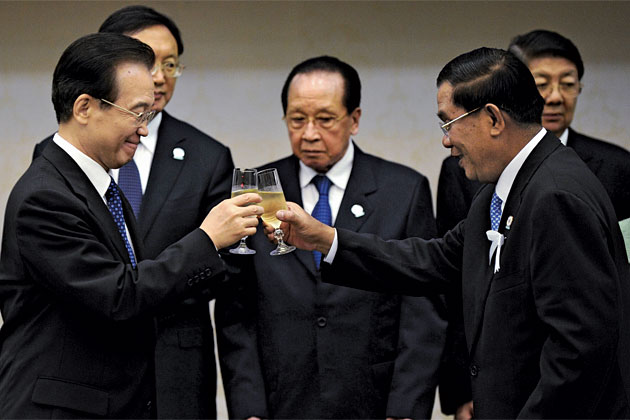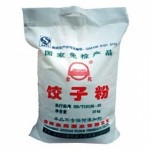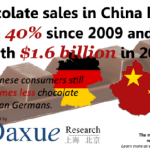Champagne market in China
Promotion Strategy of Champagne on Domestic Market
Champagne importation still booming in China?
According to statistics from the Comité Champagne (CIVC), the Chinese mainland has imported a total of 1,633,146 bottles of champagne in 2013, with a decrease of 18.35% over 2012, ranking 15 worldwide. The total imports value is 24,390,461 euros. The same statistics in 2012 appeared to be 2,000,199 bottles and 27,706,987 euros, ranking 12. From 2006 to 2011, the imports had an increase by 1,000,000 bottles in five years. After the explosive increase until 2012, the imports of champagne has turned downward. Generally speaking, the champagne market in China is showing signs of decline. The future of market expanding is less than optimistic.
Weakness of the Champagne market in China
Taking Chinese tradition and consumers’ preference into consideration, the weaknesses of champagne market in China are focused on the following points:
Chinese consumer taste for Champagne
The unique flavor of champagne can’t be popular among Chinese consumers. Consumers find it hard to get used to the tart flavor. Besides, the mineral taste and too many bubbles in champagne also repel Chinese consumers.
Low degree of alcohol
Comparing with other kinds of wines, champagne has relatively low degree of alcohol. For Chinese consumers who are used to white spirits, champagne excites drinkers less, which becomes another reason why many Chinese don’t like champagne.
Pricing strategy in China
Champagne is kind of luxury products in wines. Compared to other wines which have lower prices, champagne’s high price always keeps consumers away.
Prestige of champagne in China
In China, champagne is almost only used in celebration. Drinking champagne under other situations seems to be inappropriate in Chinese culture. This narrows consuming of champagne to a great extent.
Confusion with sparkling wine
For many consumers, it’s hard to tell champagne from sparkling wine. Meanwhile, sparkling wine usually holds a low price that consumers find easy to accept. Therefore, consumers sometimes choose sparkling wine instead of champagne, resulting in big shock in champagne market.
Political environments in China
Since the beginning of 2014, China has involved into a large scale of the anti-corruption movement which means harshly decline of gift giving in China. Champagne is often chosen as gift for its high value. Therefore champagne market has been implicated by the anti-corruption movement.
Consumption habits of Chinese consumers
Disable to be stored for a long time. Unlike other kinds of wines, champagne is hard to store for a long time. In fact, consumption habits in China show that consumers seldom drink a whole bottle of wine at one time. The longer the wine can be stored, the more consumers preferred.
Target customers and market orientation of Champagne in China
After above analysis, we can identify the target customers of champagne. These Chinese customers have attributes as follows: middle or above social class; well-educated; have relatively high income; lots of social activities; with good taste of life; easy to accept fresh things. This kind of customers appear to be more likely to consume champagne and contribute to more team-consuming.
The market orientation is located in wines which have special use for celebration. This orientation is aimed at meeting customers’ habits and make them get used to champagne. When champagne is the first choice for celebration, it will be easier for customers to buy champagne.
Possible Promotion Strategy
Based on the marketing theory of 4Ps, the promotion strategy of champagne is divided into 4 parts namely production, price, place and promotion. In the following text we will present possible strategy to expand the champagne market.
- Production strategy.
Consumers’ demands are divided into different level. The core products of champagne meet the spiritual needs of consumers and let them enjoy the happiness after drinking. Aiming at use for celebration, the design of bottles shall be gorgeous and elegant. This composes the tangible products of champagne. The extension products are about customer service. On approval and able to be custom made will help a lot.
- Price strategy.
There is fierce competition in wine market. Champagne is relatively less competitive than other kinds of wines because of its high price. On the other hand, the high cost of producing makes champagne bound to lose in low price competition. Therefore, Product-different Pricing would be a proper way. Champagne can’t get rid of the name of luxury. Instead of adjusting prices, we can divide it into low, middle and top grades. Each grade has its own price range. This would meet the consuming capacity and demands in different social stratum.
- Place strategy.
Based on the market orientation, champagne has narrow consuming sections. We must centralize all the resources to make it best in its market orientation. Considering the target customers, selling at big cities such as Beijing and Shanghai at the beginning would be the first choice. When the champagne market is stable in big cities, we can set about sales in medium cities and finally comes to small cities. Distribution channel is another factor taken into consideration. Champagne is mainly offered in hotels, bars and parties for celebration. Consequently we can set selling channels on these places to make it most efficient.
- Promotion strategy.
Promotion methods consist of advertising, staff marketing, sales promotion and PR strategy. Brief and elegant designs of advertisement improve the product image among customers. Sending staff to do staff promotion is easier for customers to accept champagne. Sales promotion includes discount, selling with prizes and free trial drink etc. Sponsoring commonweal organizations is a good way to improve the brand image and Public credibility.
Conclusion
In conclusion, champagne market is kind of limited on domestic market by culture, preference, political environment and consuming capacity etc. Yet there are solutions to expand the market. Adapt strategies listed above and try to get customers more familiar with champagne, in that way the little market share today would be big market potential in the future.
See other market research in China
To read more:
http://marketingtochina.com/situation-champagne-china-2013/
http://online.wsj.com/news/articles/SB10001424127887324310104578509370616238896
http://www.telegraph.co.uk/news/worldnews/asia/china/8522620/Moet-to-make-Champagne-in-China.html
















